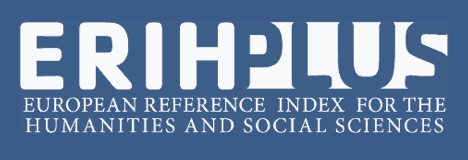RISK OF WATER SHORTAGE IN THE WEST REGION OF RIO GRANDE DO NORTE, BRAZIL
Abstract
The present work is part of a doctoral thesis, which aims to analyse the risk of water shortages in Rio Grande do Norte (RN) using the Water Shortages Risk Index (IRDH) as reference. This research is ushered by the hypothesis that the relationship among some factors (environment, infrastructure, socioeconomic status and state planning) produces territories at risk of water shortages in the State. In this context, in a systemic perspective the index was structured: 19 variables, which correspond to 4 indicators inherent to this hypothesis present factors, were taken into consideration. This work presents the IRDH that belongs to the west water supply region in Rio Grande do Norte. There are 16 municipality in that region, six of them were classified at 'high risk' of water shortages; seven at ‘medium risk’; and three considered at 'low risk' according to the IRDH classification.
References
ALMEIDA, L. Q. de; WELLE, Torsten; BIRKMANN, Jörn. Disaster risk indicators in Brazil: A proposal based on the world risk index. International Journal of Disaster Risk Reduction, [s.l.], v. 17, p. 251-272, 2016.
BARBETTA, Pedro Alberto. Estatística Aplicada às Ciências Sociais. 1ed. Florianópolis: Editora da UFSC, 1994.
BRASIL. Ministério da Integração Nacional, Secretaria Nacional de Defesa Civil. Manual de Planejamento em Defesa Civil. Brasília, DF, 1999.
BLAIKIE, Piers et al. At Risk: Natural Hazards, people’s vulnerability, and disasters. 1 ed. Londres: Routledge, 1994.
CREPANI, E. Sensoriamento Remoto e Geoprocessamento Aplicados ao Zoneamento Ecológico-Econômico e ao Ordenamento Territorial. Instituto Nacional de Pesquisas Espaciais (Org.). São José dos Campos. 124p. 2001. Disponível em: <
GUERRA, A. J. T. et al. Criação de um sistema de previsão e alerta de riscos a deslizamentos e enchentes, visando minimizar os impactos socioambientais no bairro Quitandinha, Bacia do Rio Piabanha (Afluente Do Paraíba Do Sul), Município de Petrópolis-RJ. In: SEMINÁRIO DE RECURSOS HÍDRICOS DA BACIA HIDROGRÁFICA DO PARAÍBA DO SUL, 2, 2009. Anais...São Paulo: IPABHi.
MACEDO, Y. M. Vulnerabilidade socioambiental no Bairro Mãe Luiza, Natal-RN/ Brasil. Dissertação (Mestrado em Geografia) -UFRN, Natal, 2015. 175 f.
MARANDOLA J. E.; HOGAN, D. J. As dimensões da Vulnerabilidade. São Paulo em Perspectiva, v. 20, n. 1, p. 33-43, 2004.
MEDEIROS, M. D. Vulnerabilidade Social E Exposição a Riscos Naturais no Município de Natal, RN. Dissertação (Mestrado em Geografia) – UFRN, Natal, 2014.
SMITH, K. Environmental Hazards: assessing risk and reducing disaster. 3th ed. London: Routledge. 2001.
VEYRET, Y. Os Riscos: o homem como agressor e vítima do meio ambiente. 1 ed. São Paulo: Contexto, 2007.
WELLE, T. BIRKMANN, J. The World Risk Index – An Approach to Assess Risk and Vulnerability on a Global Scale, Institute of Spatial and Regional Planning University of Stuttgart, Alemanha, 25 de setembro de 2015.
WHITE, G. F.; KATES, R. W.; BURTON, I. Knowing better and losing even more: the use of knowledge in hazards management. Environmental hazards. V. 3, n. 3-4, set./dez., p. 81-92, 2001.

This work is licensed under a Creative Commons Attribution-NonCommercial 4.0 International License.
Policy Proposal for Free Access Journals
Authors who publish in this journal agree to the following terms:
a. Authors retain the copyright and grant the journal the right of first publication, with the work simultaneously licensed under the Creative Commons Attribution License which allows the sharing of the work with acknowledgment of the authorship of the work and initial publication in this journal.
b. Authors are authorized to take additional contracts separately, for non-exclusive distribution of the version of the work published in this journal (eg publish in institutional repository or as a book chapter), with acknowledgment of authorship and initial publication in this journal.
c. Authors are allowed and encouraged to publish and distribute their work online (eg in institutional repositories or on their personal page) at any point before or during the editorial process, as this can generate productive changes, as well as increase the impact and The citation of published work (See The Effect of Free Access).





















